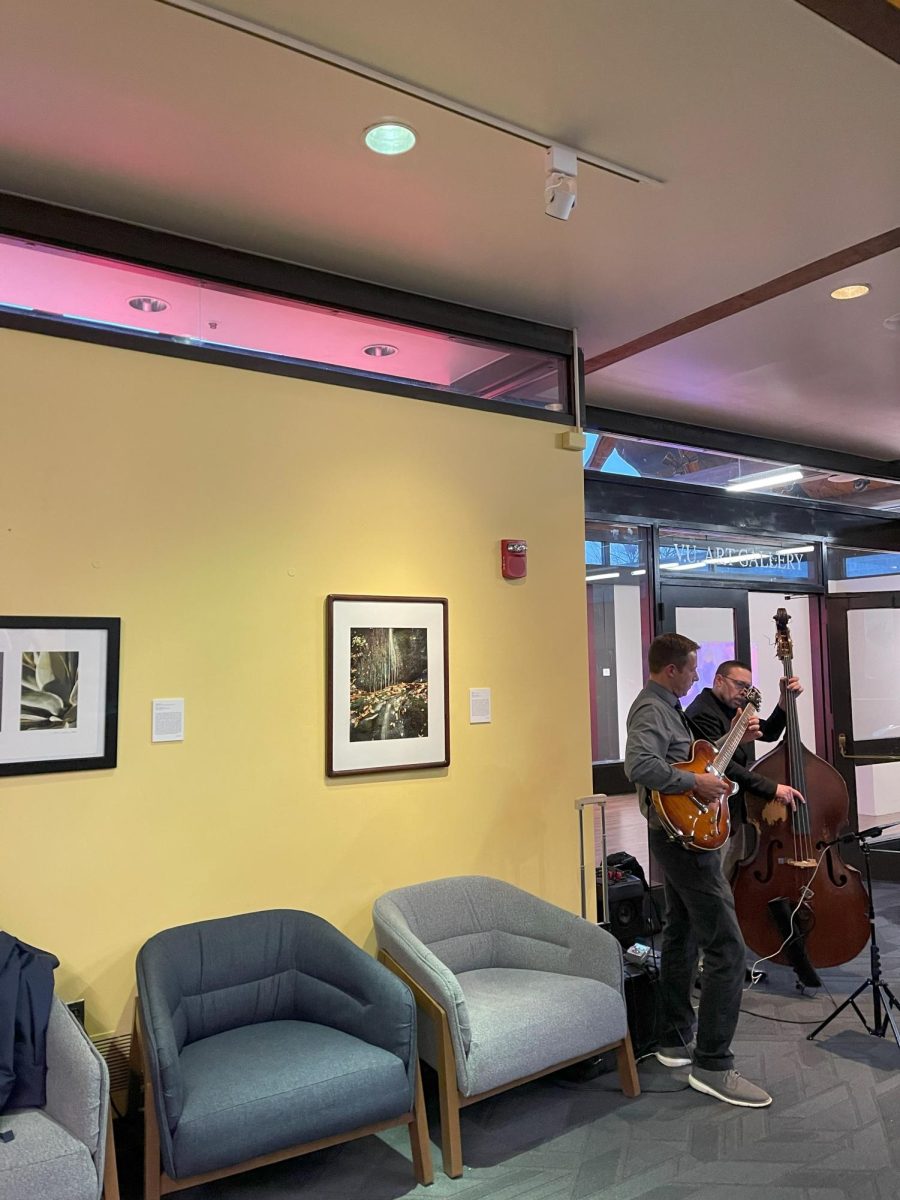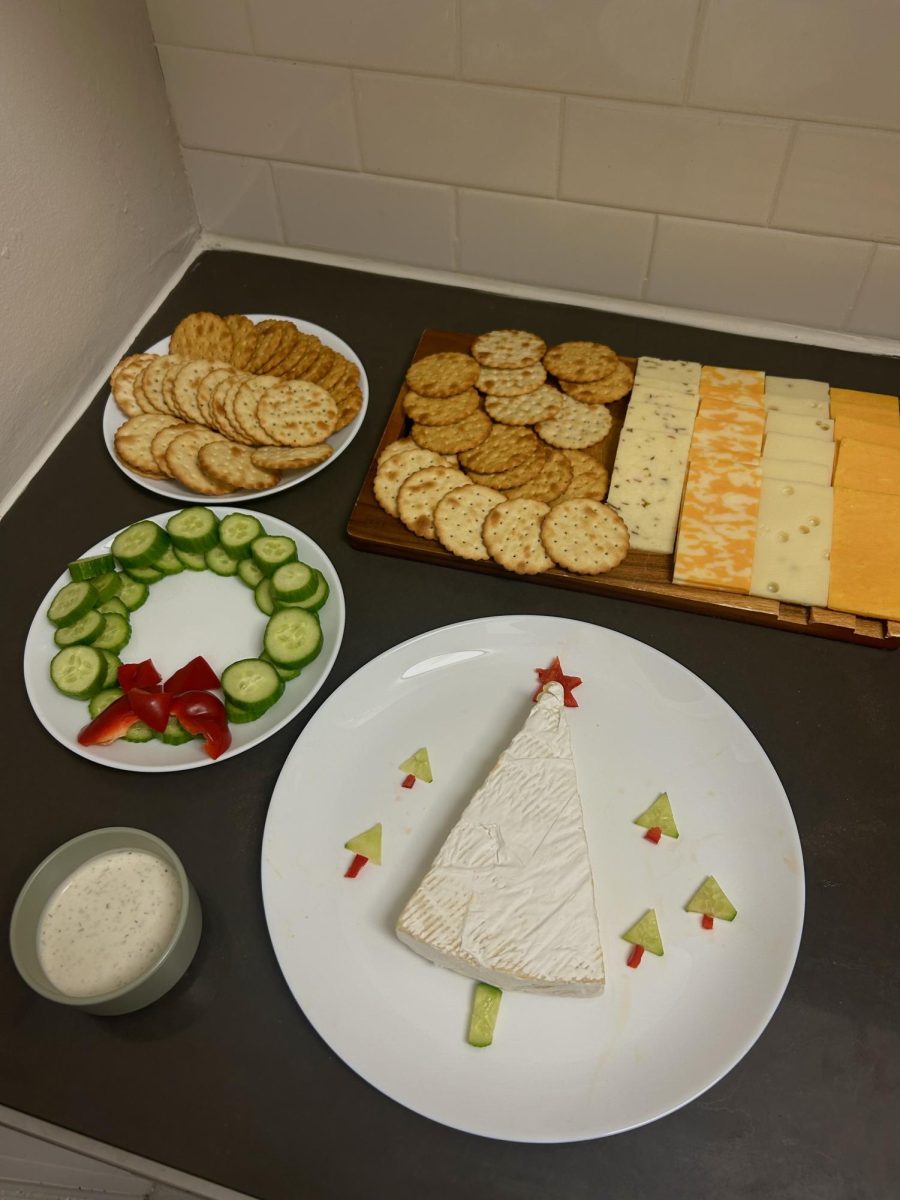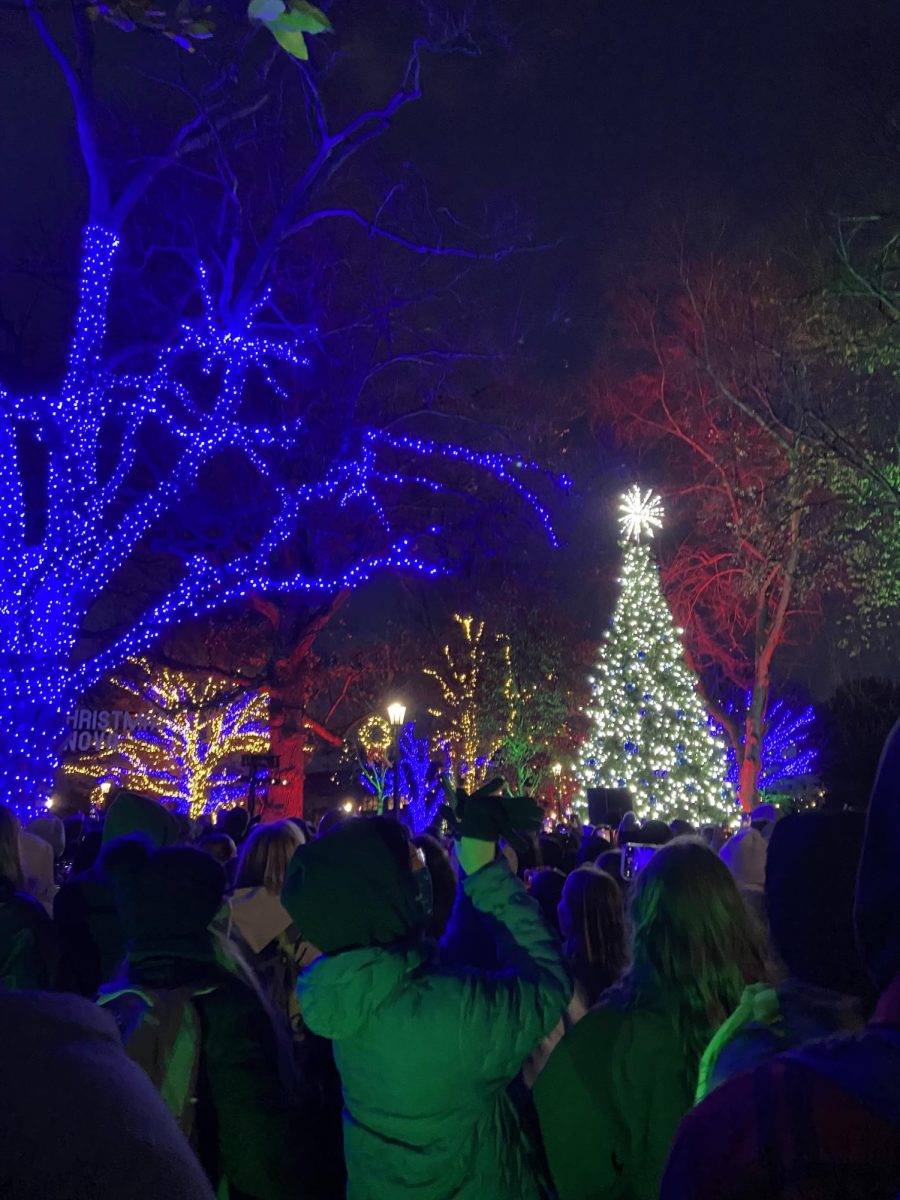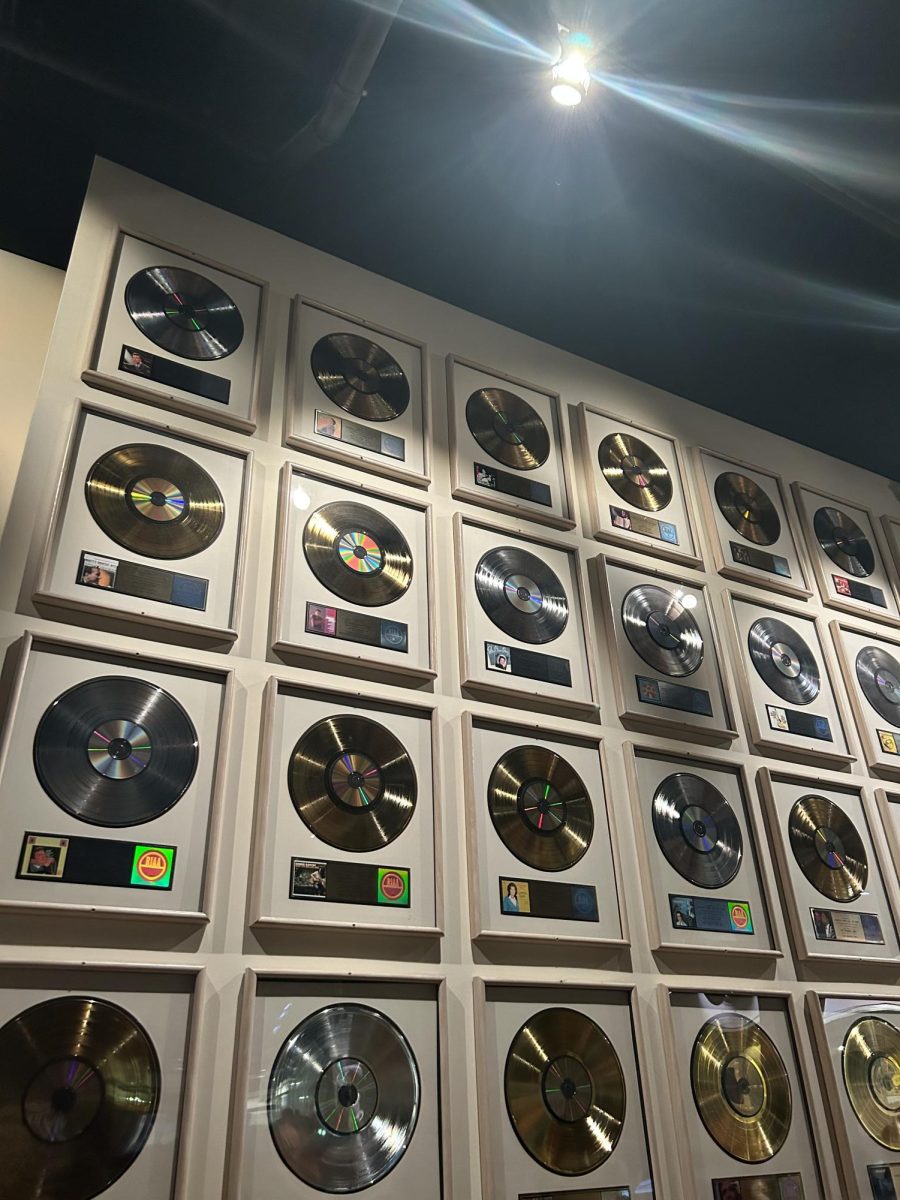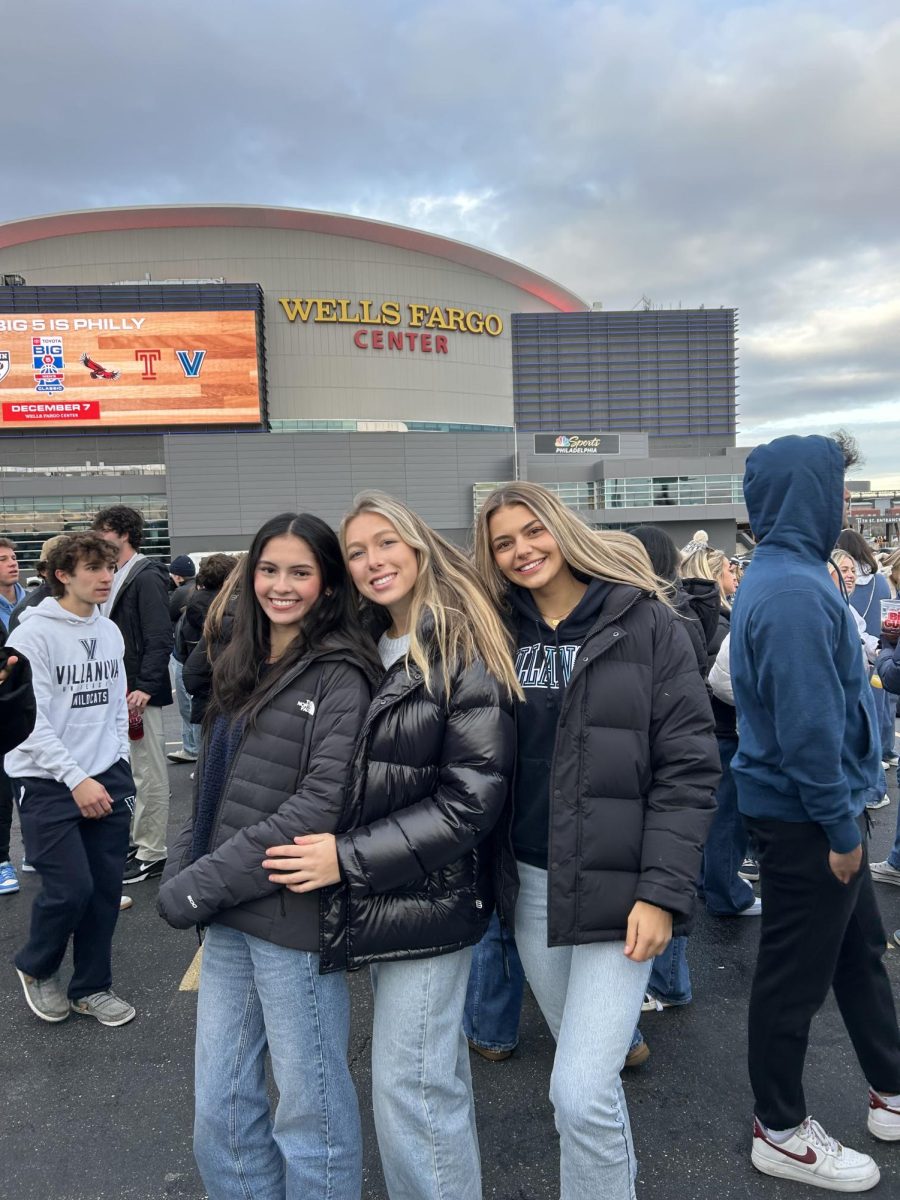Tucked away on the top floor of the Connelly Center, the cozy Commuter Lounge has long been a favorite study spot for students. Now, it has been reimagined into something more impactful. The space is now home to an art exhibition with a mission that extends far beyond aesthetics.
“Envisioning the Environment: Art Sustainability at Villanova” is the result of a collaborative effort through Dr. Leah Pires’s Art History Honors Seminar, Curating Art and Public Engagement. Over the past three months eight students, their professor and the director and curator Jennie Castillo worked to bring this project to life.
The walls of the lounge are now adorned with carefully chosen pieces from Villanova’s extensive art collection, each exploring themes of environment and sustainability. These artworks range from gushing waterfall photographs to paintings and porcelain figures of birds. The works offer insight into the current climate crisis, fostering a thoughtful connection between art and the issue at hand.
Little do most Villanovans know, there are about 10,000 artworks in the Villanova collection. Out of this vast collection, Castillo and student workers identified pieces that connect to environmental themes. Each student in the seminar selected a piece that resonated with them and conducted in-depth research on the artist and artwork, writing wall labels to accompany the display.
The project offers a unique opportunity to link global challenges to a more personal and local context. Ethan Silva, a student who worked on the exhibit, shared his perspective on how the exhibition brings the climate crisis closer to home.
“I like that it sort of bridges the theme of environment and sustainability to a local spectrum because those are such big issues,” Silva said. “By sourcing art from our university’s collection I think it makes the issue more localized and more approachable for Villanova’s campus and students.”
The exhibition is a representation of the collaborative vision and effort of the students and their mentors. The class members were able to bring their skills and knowledge from the classroom to this exhibition and through their work, they saw firsthand the tangible results of their efforts throughout the semester.
Pires truly believes that the production of this exhibition enhanced the learning experience for her students. For that reason, she plans on teaching more art history and curatorial classes in the future.
“We used consensus decision-making and committee work to create every aspect of the exhibition, from the visual identity to the theme to the order that the works are hung on the wall,” Pires said. “Through this process, students gained hands-on professional experience in curatorial work, art writing, and project management.”
Though the works vary in medium and focus, they all encourage reflection on environmental challenges. Sustainability means meeting today’s needs without jeopardizing the future. This involves repurposing resources, reducing harmful practices, and restoring natural landscapes. Art, when used to engage with sustainability, can amplify the conversation. It allows students to connect with issues they care about and share them through creative expression. Eva Nicolosi, one of the student contributors, captured this sentiment.
“I think that art can be a really powerful catalyst in the broader conversation about sustainability,” Nicolosi said. “It gives us the power to visualize some of the invisible or often overlooked aspects of climate change, pollution, or environmental degradation. Art is also super powerful in that it can evoke an emotional response that stays with the viewer, which would hopefully cause a deeper sense of responsibility and connection to the environment itself.”
For these students, the exhibition is more than a school project. It creates a community where they can express their perspective and inspire their peers. It encourages Villanovans to think critically about environmental issues through the lens of art.
In addition, the exhibition raises awareness of the university’s art collection and the dedication of the art history program. Located in a popular study area, it reminds students of the community behind the exhibition. Art history major Jackie Nathanson highlights the often-overlooked support of the art community.
“I think a lot of people don’t know we have a gallery or an art history program, but the community is the best,” Nathanson said. “It’s so supportive. We’re small but mighty. It’s really great that we can share that in a space that a lot of Villanova students come to and bring awareness to the program.”
The students will host a clothing swap and creative reuse workshop in the Commuter Lounge and Art Gallery on Dec. 10 from 6 to 8 p.m to raise further awareness about sustainability. In the meantime, the exhibition remains open for all, whether in need of a study break or seeking inspiration.
For those who visit the lounge, the exhibition offers more than an opportunity to view art. It is an invitation to think critically about humanity’s impact on the planet and how we can work together to create a sustainable future. As Villanovans pass through the lounge, they are reminded that art has the power not only to inspire, but also to drive meaningful change.

